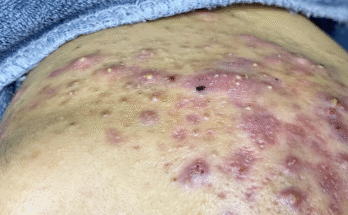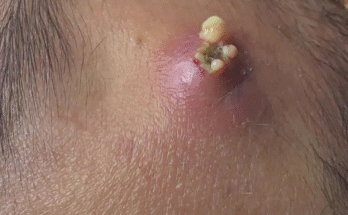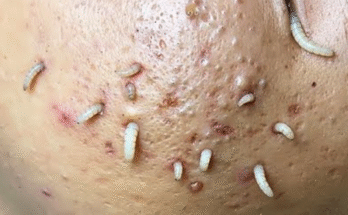Conquer Your Blackheads: A Comprehensive Guide to Prevention and Treatment
Blackheads, those pesky dark spots that mar our complexion, are a common skin concern affecting nearly everyone regardless of age, gender, or skin type. While not medically serious, their unsightly nature can impact self-esteem. This comprehensive guide delves into the world of blackheads, offering practical strategies for prevention and removal, while dispelling common myths.
Understanding Blackheads: The Root of the Problem
What Causes These Unwanted Guests?
Blackheads, or open comedones, are a type of acne. They form when pores become clogged with a mixture of sebum (your skin’s natural oil), dead skin cells, and bacteria. Exposure to air causes the trapped sebum to oxidize, turning it dark and giving blackheads their characteristic appearance. Several factors contribute to this pore-clogging process:
- Sebum Overproduction: Your sebaceous glands produce sebum to keep your skin moisturized. However, overproduction, often influenced by hormones, leads to excess oil, increasing the likelihood of clogged pores.
- Dead Skin Cell Buildup: As your skin constantly regenerates, dead skin cells accumulate. If not properly exfoliated, they contribute to pore blockages.
- Hormonal Fluctuations: Hormonal shifts during puberty, menstruation, pregnancy, or due to medication (like birth control) can trigger increased sebum production.
- Poor Skincare Habits: Using heavy, comedogenic (pore-clogging) products, neglecting proper cleansing, and sleeping with makeup on significantly increase blackhead formation.
- Diet and Lifestyle: While research is ongoing, high glycemic index foods, dairy, and excessive processed sugars may contribute to acne and blackhead development.
Common Blackhead Hideouts
Blackheads commonly appear in areas with a higher concentration of oil glands:
- The Nose: This is the most frequent location due to a high density of sebaceous glands.
- Chin and Forehead: These areas are part of the “T-zone,” known for its oily nature.
- Back and Chest: Body acne frequently leads to blackheads in these areas.
- Ears: Often overlooked, these often-hidden areas can also be affected.
- Shoulders and Neck: Individuals who sweat heavily during exercise are particularly susceptible.
Effective Blackhead Removal: Techniques and Tools
Several methods are available for blackhead removal, each with its own advantages and disadvantages. Choosing the right method depends on your skin type, the severity of your blackheads, and your personal preference.
Manual Extraction: A Hands-On Approach
Manual extraction, while potentially effective, requires caution and proper technique to prevent scarring and infection:
- Finger Technique: Cleanse your skin thoroughly, then steam your face to open pores. Wrap tissues around your index fingers to prevent direct skin contact with your nails. Gently press around the blackhead, moving downwards and outwards. Cleanse with a toner or antiseptic afterward. Never force a blackhead; if it doesn’t easily come out, stop.
- Comedone Extractor Tool: This stainless-steel tool features a small loop for targeted extraction. Use after steaming and always sterilize the tool before and after use.
Chemical Exfoliation: Gentle Yet Powerful
Chemical exfoliants dissolve the bonds between dead skin cells, promoting their natural shedding and preventing pore blockages:
- Salicylic Acid (BHA): Oil-soluble, penetrating deep into pores to effectively treat oily and acne-prone skin.
- Glycolic Acid (AHA): Works on the skin’s surface, improving texture and tone.
- Lactic Acid (AHA): A gentler option suitable for sensitive skin, offering both exfoliation and hydration.
Retinoids: Powerhouse Ingredients
Retinoids, vitamin A derivatives, accelerate cell turnover, unclogging pores and preventing new blackhead formation. These come in various strengths, from over-the-counter options like retinol and adapalene to prescription-strength tretinoin and tazarotene. Note that initial “purging” (a temporary worsening of acne) is common.
Pore Strips: A Quick Fix
Adhesive pore strips offer immediate results by pulling out blackheads. However, they may not deeply cleanse and aren’t ideal for sensitive or rosacea-prone skin.
Professional Treatments: When to Seek Expert Help
If at-home methods prove ineffective, consider professional treatments:
- Facials: Often involve steaming, manual extraction, exfoliation, and masking.
- Chemical Peels: Stronger acid-based treatments performed by dermatologists or estheticians.
- Microdermabrasion: Mechanical exfoliation using a crystal or diamond-tipped device.
- Laser and Light Therapy: Reduces oil production and targets acne-causing bacteria.
A Step-by-Step Guide to Safe At-Home Extraction
- Prepare Your Skin: Cleanse with a gentle, pH-balanced cleanser and steam your face to open pores.
- Sanitize: Cleanse your tools (extractor or fingers) and hands with rubbing alcohol or wear sterile gloves.
- Extract: Gently press and wiggle around the blackhead to release the plug.
- Aftercare: Apply a soothing toner or antiseptic (witch hazel or salicylic acid) and a cooling gel or aloe vera to calm the skin. Avoid makeup for at least 12-24 hours.
Preventing Blackheads: A Long-Term Strategy
Preventing blackheads requires a holistic approach:
- Establish a Consistent Skincare Routine: Cleanse twice daily, exfoliate 1-3 times per week, use a toner, serum (retinol or niacinamide), and moisturizer (non-comedogenic), and always wear sunscreen (SPF 30+).
- Lifestyle Modifications: Drink plenty of water, adopt a low-sugar, low-dairy diet, remove makeup promptly, and frequently wash pillowcases and towels.
Debunking Blackhead Myths
- Myth: Blackheads are dirt. Reality: They’re oxidized sebum and dead skin cells.
- Myth: Scrubbing removes blackheads. Reality: This can worsen the condition.
- Myth: You can shrink pores. Reality: You can only temporarily tighten them.
- Myth: Toothpaste cures blackheads. Reality: It can irritate the skin.
- Myth: Pore strips are the best solution. Reality: They provide temporary results, not a cure.
When to See a Dermatologist
Seek professional help if blackheads are persistent, severe, inflamed, lead to cysts, are unresponsive to over-the-counter treatments, or cause scarring or significant irritation.
The Emotional Toll of Blackheads
The impact of blackheads extends beyond aesthetics. They can negatively affect self-esteem, causing embarrassment and anxiety, particularly when visible. Remember, blackheads are normal and manageable.
The Allure of Blackhead Extraction Videos
The popularity of blackhead extraction videos stems from their oddly satisfying nature and apparent effectiveness. However, remember that these videos should not replace professional advice. At-home attempts at complex extractions can be risky.
Recommended Products (2025): A Starting Point
This list offers suggestions, but individual needs vary; consult a dermatologist for personalized recommendations.
(Include product examples here, mirroring the original text’s product recommendations)
Frequently Asked Questions (FAQs)
(Include the FAQs from the original text)
Conclusion: Clearer Skin, Greater Confidence
Blackheads are a common, manageable skin concern. Consistent skincare, proper extraction techniques (when necessary), and patience are key. Don’t hesitate to seek professional guidance when needed. With the right approach, you can achieve clearer, healthier skin and boost your confidence.



